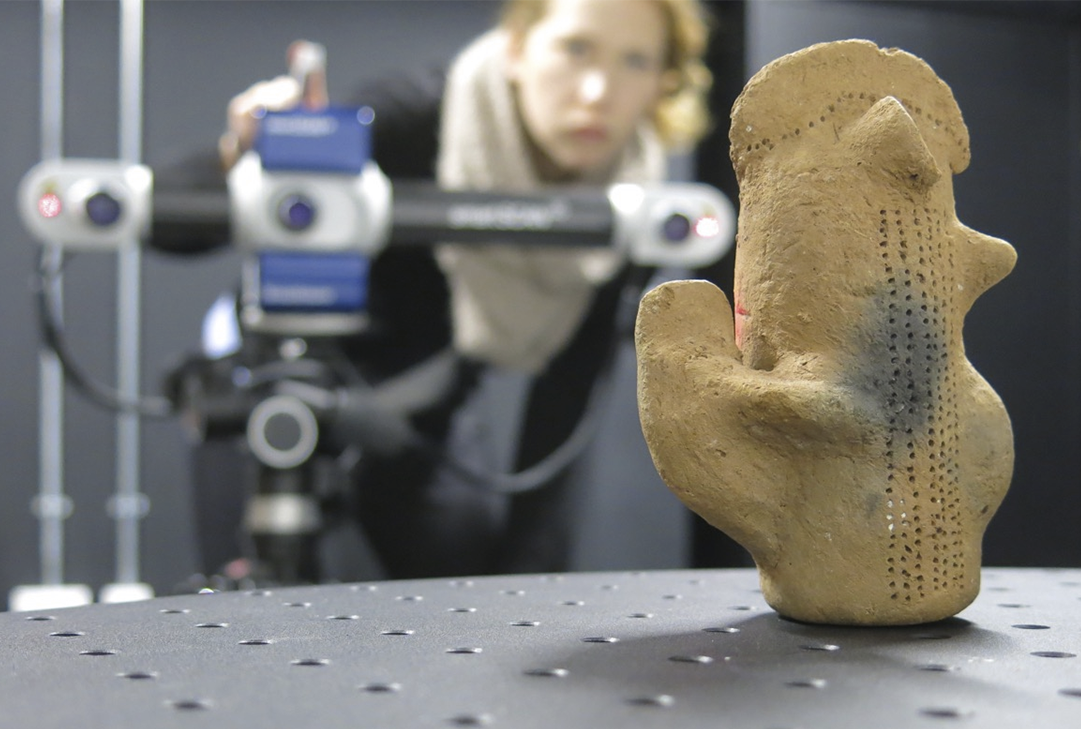Museum Conservation Institute
Director: Sanchita Balachandran
Total Full-Time Employees: 25
Overview
The mission of the Smithsonian’s Museum Conservation Institute is to be the center for specialized technical collection research and conservation for all Smithsonian museums and collections. To fulfill this mission, the institute’s staff members combine their knowledge of materials and the history of technology with state-of-the-art instrumentation and scientific techniques to provide technical research studies and interpretation of artistic, anthropological, biological and historical objects.
These studies elucidate their provenance, composition and cultural context and improve the Smithsonian’s conservation and collections-storage capabilities. In addition, they assist with authentication and help determine the object’s level of technological sophistication. Thus the studies assist art historians and conservators as they place objects within a culture and a time period, look for new cultural influences within societies and compare cultural and technological change across different periods and geographic areas. With this information, art historians, historians and archaeologists document cultural interactions and the spread of ideas.
Through its Protecting Cultural Heritage and Preventive Conservation Programs, and by participating in the Smithsonian’s signature Preparedness and Response in Collections Emergencies (PRICE) program, MCI responds to the threats facing cultural heritage in multiple and complex ways, including analyzing and consulting on preservation environments; developing less invasive and damaging storage, display and conservation techniques; and supporting U.S. agencies and the museum community in identifying illicitly trafficked cultural heritage artifacts and objects.
The institute is the only Smithsonian resource for technical studies and analyses for most of the Smithsonian collections. It brings unique analytical capabilities to Smithsonian researchers, including a central mass spectrometry instrument core and advanced technological capabilities for analyzing biomolecules. In addition to responding to requests for consultations from within the Smithsonian, the MCI handles requests from Smithsonian affiliates and many other federal, museum and academic organizations.
History
In 1963, the Conservation Research Laboratory was established by the Smithsonian’s Board of Regents to respond to the growing need for a scientific laboratory to support conservation of collections across the Institution. A newly graduated conservator, a chemist and a secretary with a background in the arts comprised the first staff.
The name of the laboratory was changed to the Conservation Analytical Laboratory in 1965 to better reflect the needs of its constituents. With its move to the Museum Support Center in Suitland, Maryland, in 1983, the laboratory accepted a wider range of responsibilities, including a congressionally mandated national conservation-training program and expanded scientific research program in conservation. In 1998, the Board of Regents approved the name change Smithsonian Center for Materials Research and Education—in recognition of the laboratory’s mission to serve national and international museum communities, as well as the Smithsonian, and provide professional training and education programs. The latest name change to Museum Conservation Institute reaffirms the central role of the unit to provide highly technical conservation science to support the Smithsonian museums and collections.
Facilities
The institute’s laboratories are equipped with advanced analytical instrumentation, including the following: Orbitrap mass spectrometry, including direct analysis in real time, high pressure liquid chromatography, and desorption electrospray ionization; isotope ratio mass spectrometry, including elemental analyzers and GasBench preparation; inductively coupled plasma mass spectrometry, including solution and laser ablation; gas chromatography-mass spectrometry, including pyrolysis, head-space, liquid injection and solid phase microextraction; Fourier transform infrared spectroscopy (FTIR), including attenuated total reflectance FTIR and portable FTIR; Raman spectroscopy, including Fourier transformed Raman, dispersive Raman and portable Raman spectroscopy; near-IR spectroscopy; optical and digital microscopy; scanning electron microscopy with X-ray, energy dispersive and cathodoluminescence spectroscopy; micro-X-ray diffraction; X-ray fluorescence (XRF), including micro-XRF and portable XRF; digital X-ray radiography; microfadometry; and structured 3-D color scanning of objects.
Publications
MCI staff contributes many articles to the professional literature—averaging 50 annually, produces volumes in the serial Smithsonian Contributions to Museum Conservation and hosts a monthly series of lectures entitled “Topics in Museum Conservation.”
# # #
SI-451-2018

